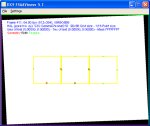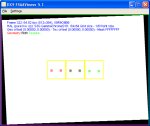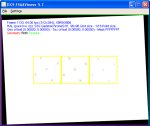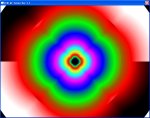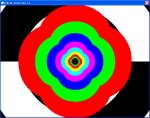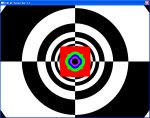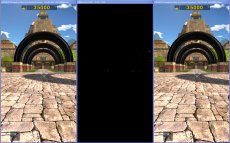Image Quality
Here we'll take a look at the output of both the Normal IQ and the additional IQ settings that are available on the GammaChrome S18 board.
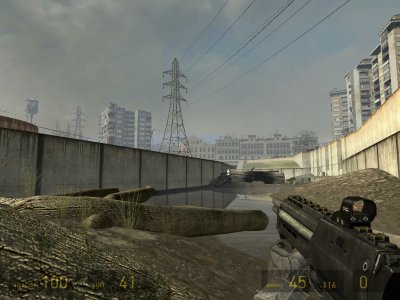
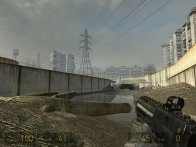 |
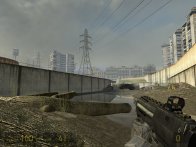 |
Generally speaking the IQ of the GammaChrome S18 appears to be up to the standard of ATI and NVIDIA's current boards, as evidenced from the image above from Half Life 2. Closer inspection appears to indicate that some of the rendering on the S18 is a little lighter than the X600, whilst both the S18 and X600 show a little more detail on the log.
As with other boards currently available, GammaChrome S18 offers some Full Scene Anti-Aliasing (FSAA) capabilities, however at present these appear to only be available under DirectX and not OpenGL. The images below highlight the sampling properties of GammaChrome's FSAA mechanism.
| 2x FSAA 6.14.10.1904-15.14.10e Drivers |
2x FSAA 6.14.10.1960-15.15.08c Drivers |
4x FSAA |
The sample output images show that both Geometry (left hand box) and Textures (right hand box) are receiving extra samples with FSAA enabled, corresponding with a SuperSampling scheme. The sample patterns are capable of "rotated" grid sampling patterns, and 4x FSAA uses a similar pattern that was first seen on consumer boards from 3dfx and has since been adopted by both ATI and NVIDIA as well. However, the rotated 2x FSAA was causing a somewhat rough output, as seen by the first image under the older drivers, and this has been changed to a horizontal ordered grid in the latest drivers (at time of review).
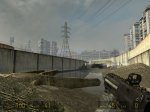 |
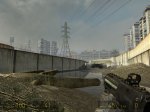 |
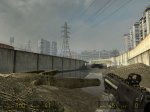 |
| 2x FSAA 6.14.10.1904-15.14.10e Drivers |
2x FSAA 6.14.10.1960-15.15.08c Drivers |
4x FSAA |
We can see from the in-game image the newer 2x FSAA sampling pattern does appear to offer slightly less Anti-Aliasing, overall, than the previous 2x rotated pattern, as is to be expected for such a pattern. 4x FSAA does clean up the image much further than 2x FSAA.
 |
 |
 |
| S3 GammaChrome S18 | ATI Radeon X600 | NVIDIA GeForce 6200 |
From the images above we can compare the differences between SuperSampling on S18 and the MultiSampling schemes on the X600 and 6200. As SuperSampling oversamples both pixels and textures this means that Alpha textures receive AntiAliasing as well, as evidenced from the fence on the left side of the image above and the actual frame of the power pylon. Interestingly, though, the MultiSampling schemes on both X600 and 6200 are making the power lines much darker than the S18 is even though its clear that there is less aliasing than without FSAA. The main drawback to SuperSampling FSAA is that it has a higher performance overheard than MultiSampling and we'll look at this throughout the review.
The Trilinear Filtering algorithm seems much like others would be, however when Anisotropic Filtering is enabled it appears to default to Bilinear filtering, or at least this is what the coloured mip-maps would appear to indicate. The maximum level of Anisotropic Filtering available on GammaChrome S18 is 16x.
S3 were the pioneers of "Fast Trilinear", a method that achieves the same mathematical equivalence of Trilinear filtering by just sampling from a single mip map - mip-map levels are normally generated by creating lower resolution version of the texture map, with a 2x2 down-sample and when Trilinear filtering is enabled samples from two levels of the texture mip-maps are blended together. "Fast Trilinear" operates by taking a larger number of samples from a single mip-map level, equivalent to the number of samples the lower level of mip-map is generated at in the first place as well as the standard number of samples for a Bilinear filtering from the current mip level. Because "Fast Trilinear" is only sampling from one mip-map it will look like Bilinear on applications that show the mip-levels in use; by default "Fast Trilinear" is set to "Auto" by the S3 drivers so its unclear exactly when its enabled.
The above image shows a comparison difference (centre) of both application set 2x Bilinear Anisotropic Filtering (left) and 2x Trilinear Anisotropic Filtering (right). The comparison image virtually shows no difference, except for the areas that differ frame to frame, and certainly none on the path, which is where would would expect to see some differences from the two filtering methods, which suggests that the GammaChrome S18 is defaulting to Bilinear Filtering, not Fast Trilinear, when Anisotropic Filtering is enabled.

